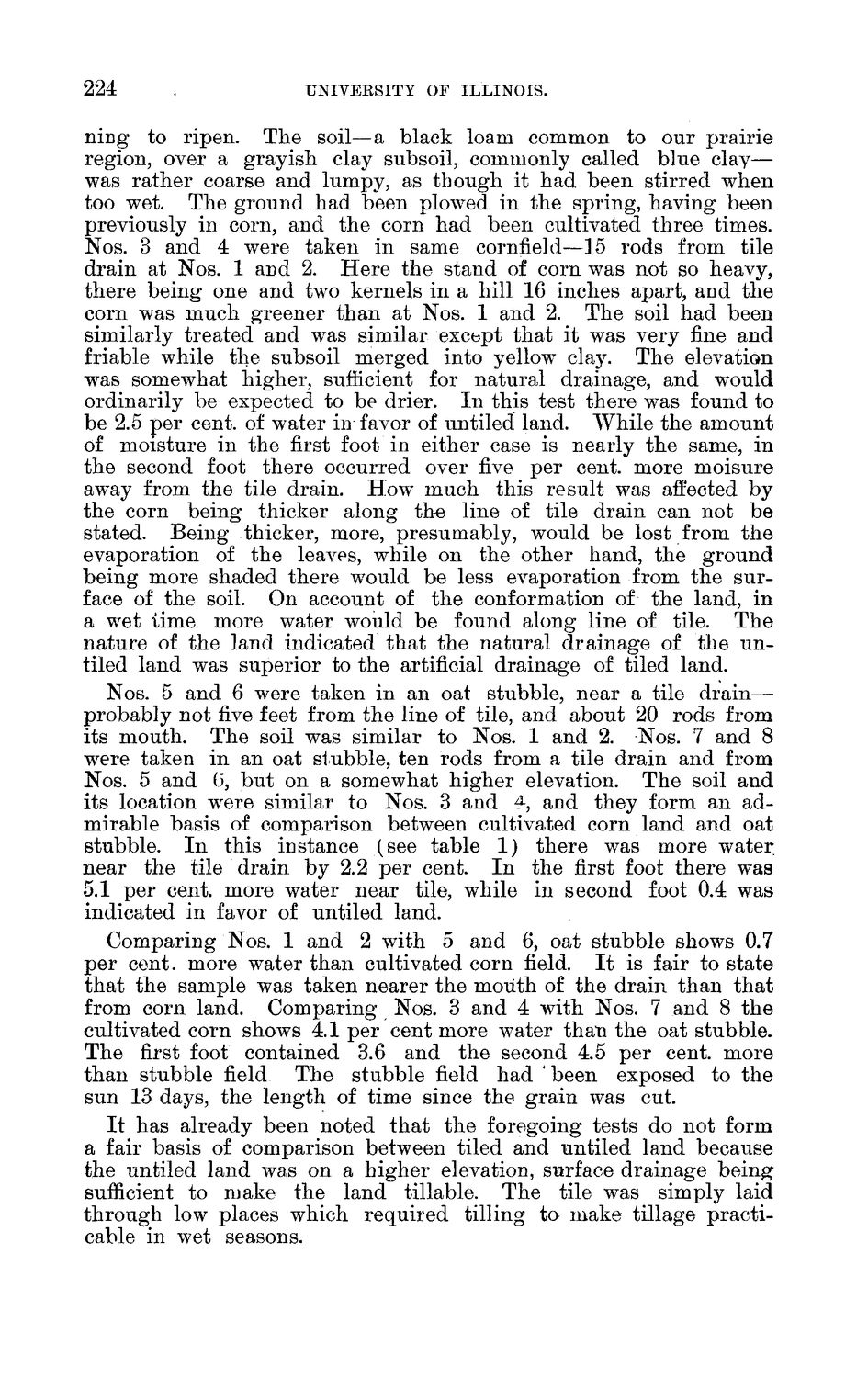| |
| |
Caption: Board of Trustees Minutes - 1888
This is a reduced-resolution page image for fast online browsing.

EXTRACTED TEXT FROM PAGE:
224 UNIVEESITY OF ILLINOIS. ning to ripen. The soil—a black loam common to our prairie region, over a grayish clay subsoil, commonly called blue clay— was rather coarse and lumpy, as though it had been stirred when too wet. The ground had been plowed in the spring, having been previously in corn, and the corn had been cultivated three times. Nos. 3 and 4 were taken in same cornfield—15 rods from tile drain at Nos. 1 and 2. Here the stand of corn was not so heavy, there being one and two kernels in a hill 16 inches apart, and the corn was much greener than at Nos. 1 and 2. The soil had been similarly treated and was similar except that it was very fine and friable while the subsoil merged into yellow clay. The elevation was somewhat higher, sufficient for natural drainage, and would ordinarily be expected to be drier. In this test there was found to be 2.5 per cent, of water in favor of untiled land. While the amount of moisture in the first foot in either case is nearly the same, in the second foot there occurred over five per cent, more moisure away from the tile drain. How much this result was affected by the corn being thicker along the line of tile drain can not be stated. Being thicker, more, presumably, would be lost from the evaporation of the leaves, while on the other hand, the ground being more shaded there would be less evaporation from the surface of the soil. On account of the conformation of the land, in a wet time more water would be found along line of tile. The nature of the land indicated that the natural drainage of the untiled land was superior to the artificial drainage of tiled land. Nos. 5 and 6 were taken in an oat stubble, near a tile drain— probably not five feet from the line of tile, and about 20 rods from its mouth. The soil was similar to Nos. 1 and 2. Nos. 7 and 8 were taken in an oat stubble, ten rods from a tile drain and from Nos. 5 and (>, but on a somewhat higher elevation. The soil and its location wTere similar to Nos. 3 and 4, and they form an admirable basis of comparison between cultivated corn land and oat stubble. I n this instance (see table 1) there was more water near the tile drain by 2.2 per cent. I n the first foot there was 5.1 per cent, more water near tile, while in second foot 0.4 was indicated in favor of untiled land. Comparing Nos. 1 and 2 with 5 and 6, oat stubble shows 0.7 per cent, more water than cultivated corn field. I t is fair to state that the sample was taken nearer the mouth of the drain than that from corn land. Comparing Nos. 3 and 4 with Nos. 7 and 8 the cultivated corn shows 4.1 per cent more water than the oat stubble. The first foot contained 3.6 and the second 4.5 per cent, more than stubble field The stubble field had ' been exposed to the sun 13 days, the length of time since the grain was cut. It has already been noted that the foregoing tests do not form a fair basis of comparison between tiled and untiled land because the untiled land was on a higher elevation, surface drainage being sufficient to make the land tillable. The tile was simply laid through low places which required tilling to make tillage practicable in wet seasons.
| |